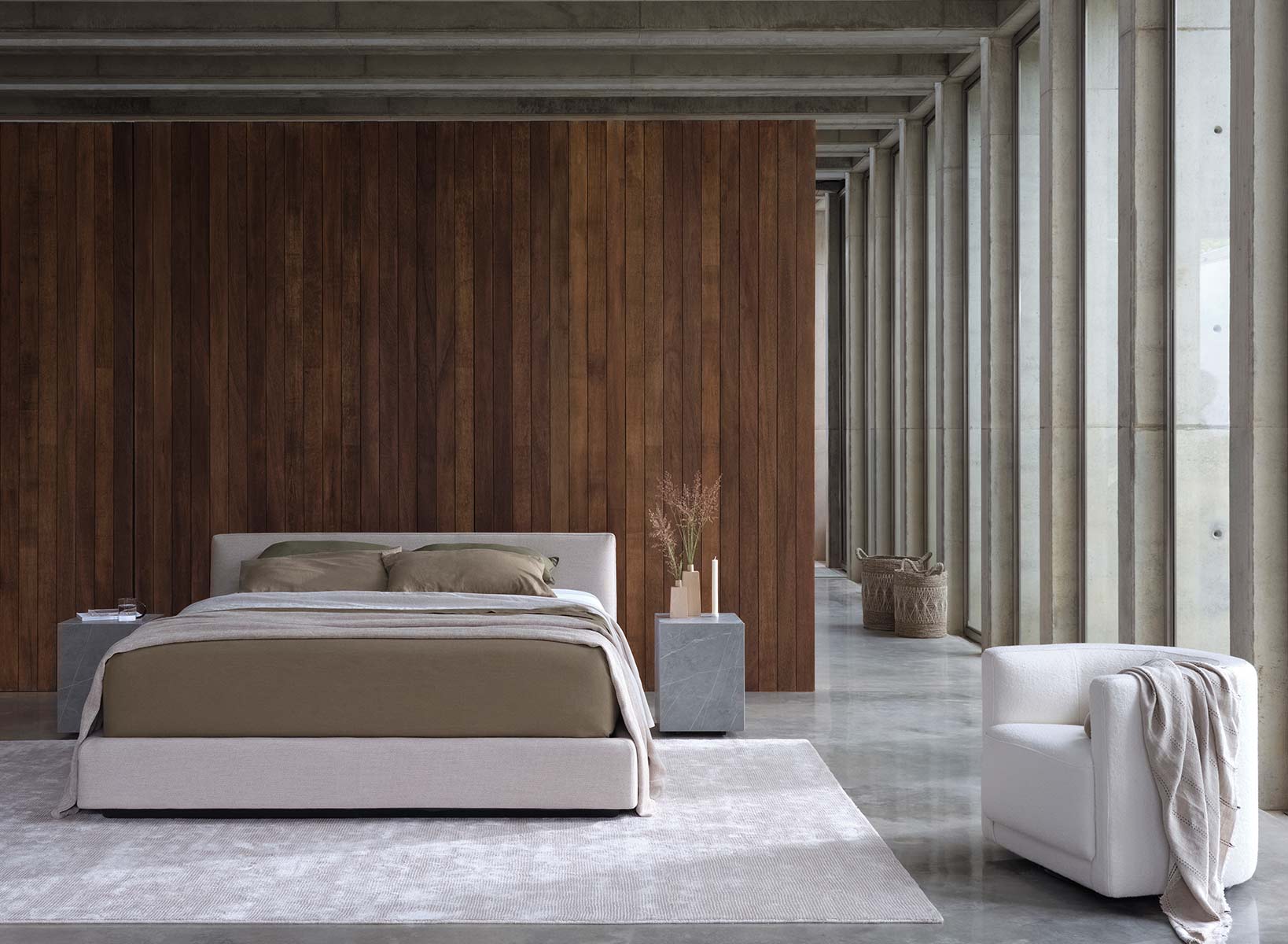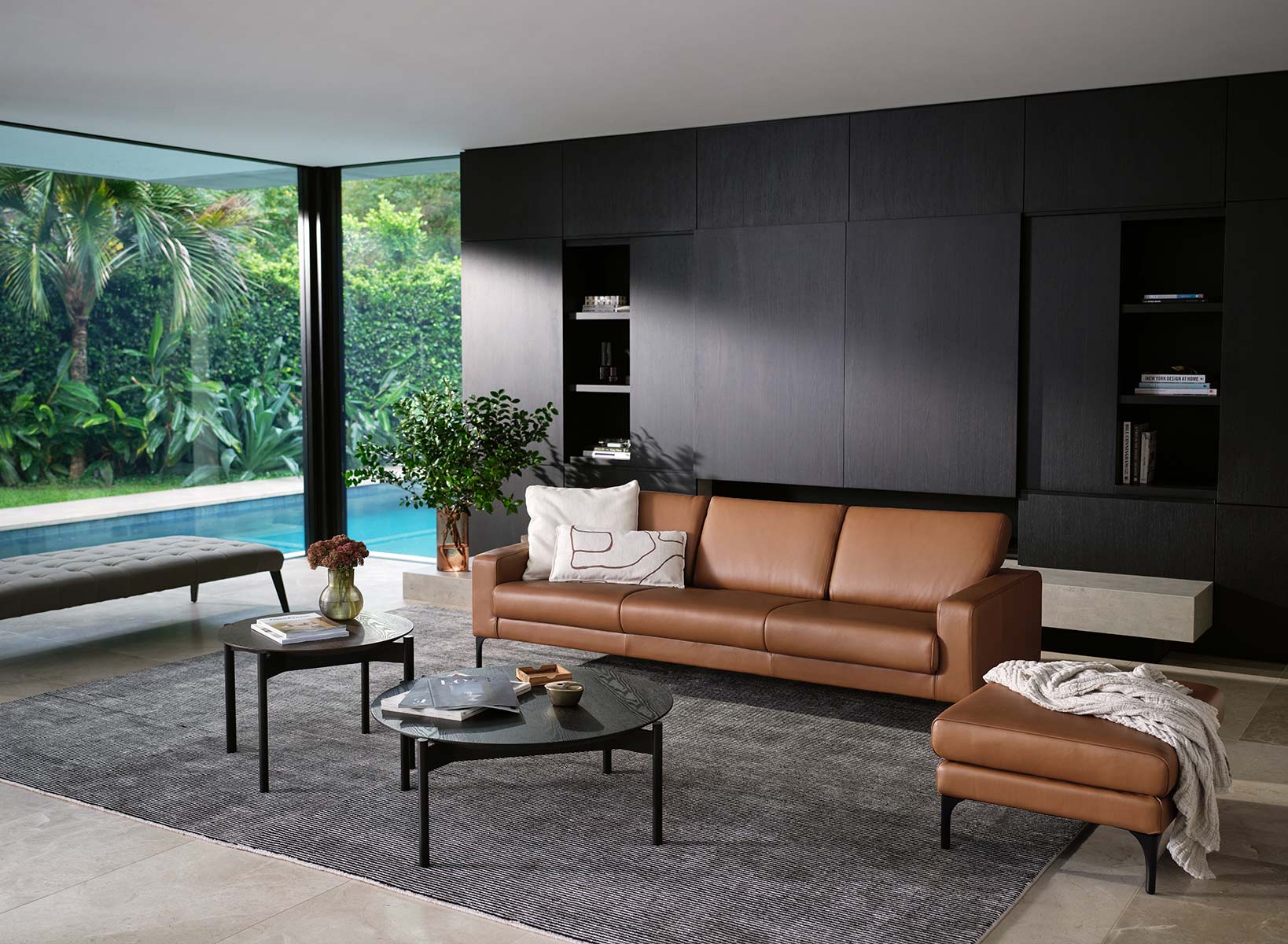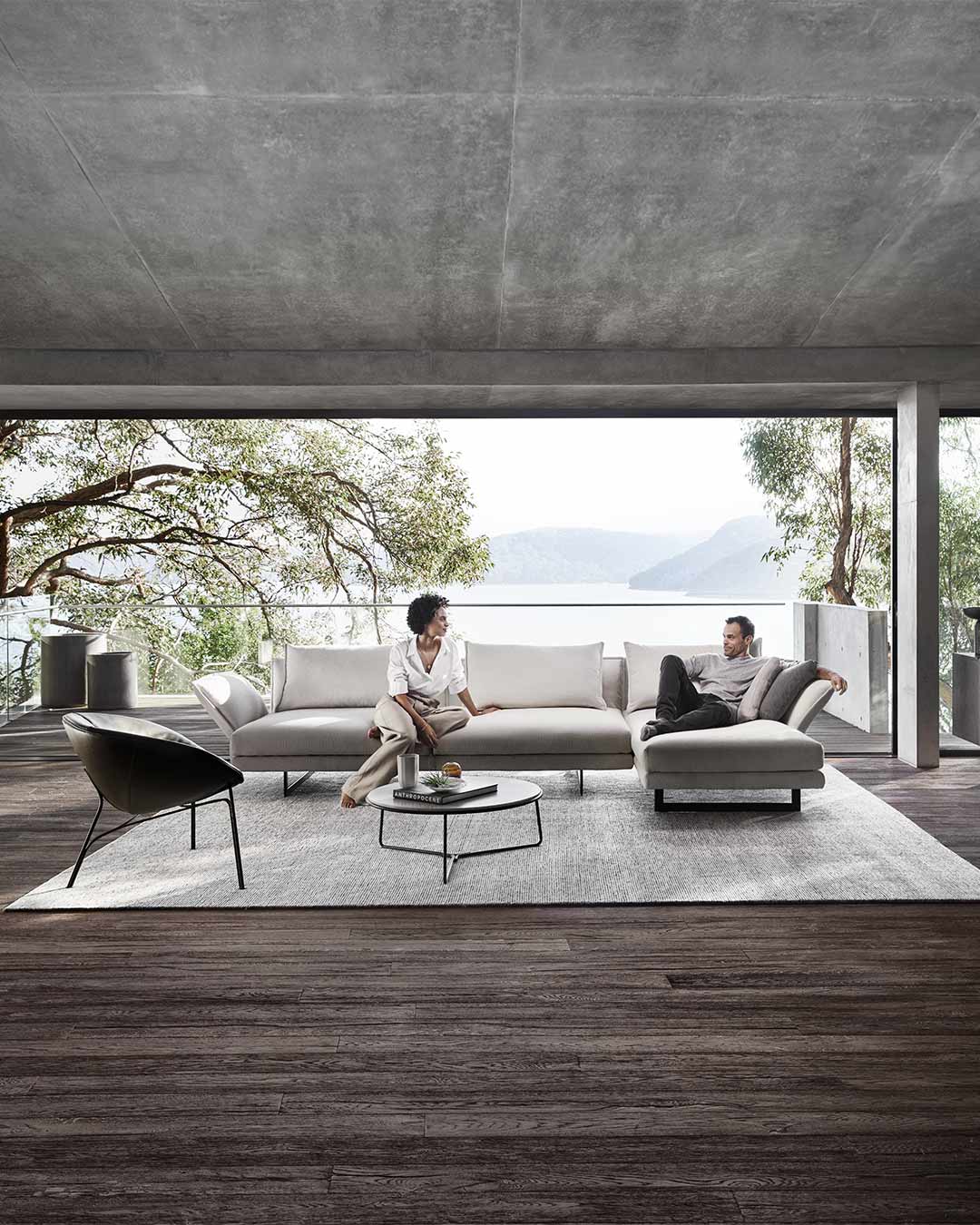Complete guide to buying the perfect rug
The right rug can make a room.
From a practical standpoint, rugs are soft under your feet and bring warmth to your flooring. From a design standpoint, the right rug effortlessly anchors the room and creates layers of interest, depth and intrigue.
Despite having the prowess to tie diverse interior elements together to create a harmonious space, the rug is often an afterthought.
At KING, we understand choosing a rug can be intimidating. Along with a seemingly endless scope of options, you need to consider size, colour, shape, rug placement, weave and several other factors.
This guide lists the things you need to consider before buying a rug and will help you choose the right rug for your space.
 To create balance and harmony in your space, it’s often best to select an oversized rug. The Hue Rug as featured in Steel, suitably fills the room.
To create balance and harmony in your space, it’s often best to select an oversized rug. The Hue Rug as featured in Steel, suitably fills the room.
How to choose the right size rug for your space
The first step to finding the perfect rug is working out the best size for your space.
The right size rug anchors the room and brings warmth and balance to the space. Paradoxically, a rug that is too small will make the space feel uninviting and disjointed.
Interior designer and KING Brand Ambassador Neale Whitaker says nothing will make a room look smaller than a small rug.
"My mantra of if in doubt, oversize is especially relevant when it comes to rugs," Neale encourages.
"In an average-sized room, a large rug will feel balanced, and even in a small room, a large rug can create the illusion of size."
When measuring your space for a rug, remember to consider furniture placement. A large rug should accommodate all your anchor furniture while leaving 40 centimetres of bare floor space between the walls and the rug.
A smaller rug should accommodate at least the front feet of heavier furniture and leave 20-30 centimetres of bare floor around the rug to frame the room and create the illusion of space.
Indoor and outdoor rugs in KING Rug Collection are available in a standard 200 x 300 and two unique sizes exclusive to KING, 260 x 360 and 300 x 430., with custom sizes available for selected designs.
 Choose your rug first as the foundation and build the room around the rug. Bicheno Rug featured above in Sand with the Promenade Storage Bed and Oliver Tub Chair.
Choose your rug first as the foundation and build the room around the rug. Bicheno Rug featured above in Sand with the Promenade Storage Bed and Oliver Tub Chair.
Rug placement: how to style a room around a rug
With the ability to anchor a room and set the tone of the space, the rug should never be an afterthought.
Trying to style a rug into a space already adorned with furniture can make finding the right rug even more difficult. Instead, Neale says to use the rug as the foundation and plan your furniture around it.
"I firmly believe that when we look at a room, the first thing our eye registers is the floor – that first glimpse will dictate our reaction," Neale explains.
"That's why so many interior designers choose to use a rug as their starting point and create a room - quite literally - from the ground up."
The size of your space and the room you are styling will influence where you position your furniture. The infographics below are designed to help you with rug placement and styling.
Living Room: If your space allows, invest in a large rug that can accommodate the entire sofa. Alternatively, a smaller rug should accommodate at least the front feet of heavier furniture items like sofas and armchairs.

Dining area: Your dining table profile should echo the rug shape and orientation. "Make sure the dining chairs will still be on the rug when they're pushed back. You don't want rocking guests either – at least, not in that way," Neale adds.
Bedroom: As a general guideline, place at least a third of the bed's base on the rug. Size up if space allows.
Hallway: Purchase a narrow runner, allowing space for door swings.
Outdoor: Define large open-plan spaces by leaving a 20-30cm perimeter.
For smaller items such as lamps or side tables position them entirely on or off the rug to avoid furniture moving or rocking.

How to choose the right type of rug for your space
There are two things you need to consider when deciding which rug fabrication is right for your space.
The first is aesthetics, or the look you want to achieve with the rug. The second is function.
While a rug can suit a room visually, the weave must also be suitable for the area and frequency of use. Neale says knowing the different rug weaves can help determine if a rug is suitable for your space.
Natural fibres: New Zealand wool is the natural fibre embraced by the KING Rug Collection. Long-lasting and easy to clean, these materials are suited to medium traffic areas. The Marion and Oceania are both rich in natural fibres, making them a good choice for busy living spaces.
Synthetic fibres: Nylon, acrylic, polyester, and polypropylene are synthetic fibres commonly used in textiles. The Apollo Rug consists of poly-nylon, chosen as it is a durable, easy to clean and typicality stain resistant fibre.
Artificial silk: Also referred to as art silk, fibres are soft and luxurious. Common artificial silk fibres include viscose, Tencel, and banana silk. Art silk rugs including Bicheno, Hue and Lonsdale have specific care requirements and are best suited to low-traffic areas.
Warp: Parallel threads run the length of the rug and provide the foundation for where the knots are tied.
Weft: Horizontal threads pass through the width of the rug between each row of knots. Alternating between the warp threads, the weft secures the knots in place.
Knot: The threads looped around two adjacent warp threads to form the pile (surface of the rug).
Pile: Refers to the density or height of the rug fibres, which is measured from the rug's surface to its backing.
Types of rug weaving techniques
Hand-knotted: Hand-knotting is the most labour-intensive rug-making technique. By hand, rug makers tie individual knots along the entire length of the warp fibres to form the pile.
Hand-loomed: Rug artisans use a manual hand loom to interlace threads through the wefts and warps. The manual process achieves a similar aesthetic and texture as a hand-knotted rug.
Tufted: Loops of yarn are pulled through the rug backing either by a machine or a hand-held tool. This technique does not use knots.
Flat weaves: Flat-woven rugs can be constructed by hand or with a loom. This technique does not involve knots or pulling yarns through the rug's backing. Instead, threads are interwoven through the vertical yarns (warps) and horizontal yarns (wefts). There is no pile.

How to maintain and clean your rug
Rugs get a lot of foot traffic and use. From crumbs and accidental spills to dirty footprints, keeping them spotless is near impossible.
KING recommends vacuuming your rug once a week to avoid a build-up of dust and dirt. If possible, use a vacuum with a non-rotating head and low suction setting.
If spills happen, time is of the essence. Wool blend rugs can be spot cleaned with a damp cloth. For art silk blends, use paper towel to absorb the liquid as quickly as possible. Do not use a damp cloth on an art silk rug. Any additional liquid can cause further damage.
If possible, position your rug away from direct sunlight to avoid discolouration and place felt discs under furniture legs to prevent indentations. KING recommends rotating your rug every six months for even fading and wear. To minimise excessive shedding and wear, avoid walking over your rug with rubber-soled shoes and slippers.
Purchasing an underlay is an investment in the lifespan of your rug. Not only do rug pads prevent sliding, but they also assist in minimising wear and tear. Ensure the underlay is two inches smaller than the edge of your rug.

Final steps in choosing the right rug for your home
The final step in choosing the right rug for your home is knowing what colours suit your space.
Neale says there is nothing wrong with opting for bright colours or bold patterns, but he prefers rugs that embrace neutral tones, which extends beyond beige to include greys, blacks, charcoals, and rich browns
"Greys are neutrals too, as are sage and olive green, warmer shades such as brick and terracotta and the soft caramel and latte hues,"
"Neutral should never mean dull. Some of the most beautifully balanced and welcoming interiors are based on a neutral palette. The key is in the layering of complementary colours, materials and textures," continues Neale.

Checklist for buying the perfect rug
The right rug can effortlessly bring cohesion and warmth to your space.
Along with echoing your style, a perfectly curated rug also adds layers of depth and interest.
To help you choose the perfect rug for your space, remember to:
- Measure the area and select the right size rug
- Go larger over smaller
- Use the rug as the foundation for styling the space
- Position anchor furniture over the rug
- Position small furnishings entirely on or off the rug
- Leave a border of bare floor space between the walls and the rug
- Select a durable material and weave for high-traffic areas
Following these above-mentioned steps will help you select the right rug for your home.
Handcrafted by skilled artisans, the KING Rug Collection embraces both quality and style. With neutral tones and subtle textural nuances, the range is crafted to stand the test of time.
Experience the collection for yourself at a KING Showroom or shop the collection online.
For more inspiration on picking the perfect rug for your space, read Neale Whitaker’s guide to living with rugs.
















